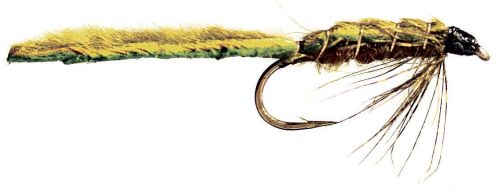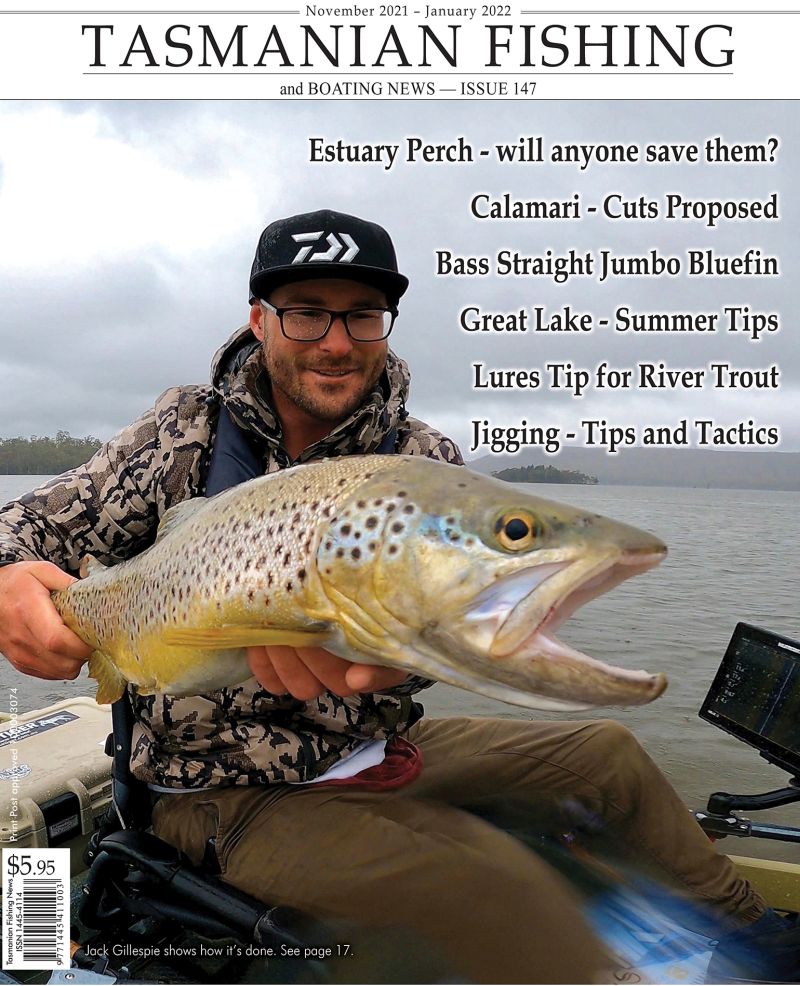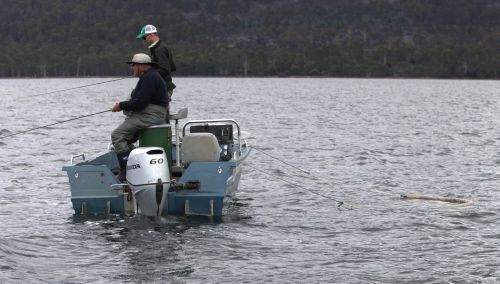 Presented from Issue 105, August 2013
Presented from Issue 105, August 2013
Fishing early season is cold, but it can be very productive.
If you are fly fishing you will almost certainly be wet fly fishing - unless the fish are in very shallow water then a dry fly may work.
Anglers all seem to have their early season favourites and most are weighted in one way or another. Patterns include many versions of Woolly Worms in different colours - such as black, brown, olive and combinations. Mrs Simpson, fur flies, Yetis, Cat flies, Leeches, Streamers, Soft Hackle English wets and Matukas all have their followers.
The chosen fly to start the season for me is a leech pattern and like most wets they come in many pattern styles and colours. I like black or olive.
The following pattern not only imitates a leech but many other aquatic foods. Leeches swim with an up and down movement and have a flat, slim body. Personally I prefer a long tail because it gives a lot of action when retrieved. Weight the fly to get it down to the fish zone.
My choice of line for the early season is a DI-3 or line that sinks at three inches per second - or you can go heavier — depending on depth of water. In windy conditions I like a drogue to slow the boat. This makes it easier to get the fly down without overtaking it in the boat. Many now advocate anchoring and fishing from a stationary boat — this will keep you in better touch with your flies.
Green Leech
- Hook: Long shank, heavy shank size 10
- Thread: Black 6/0
- Rib: Flat gold
- Tail/Back: Olive green zonker strip. Must be tanned for flexibility.
- Body: Olive green leech yarn
- Hackle: Dyed olive green guinea fowl feather
Method
- Take thread full length of hook shank. Tie in flat gold rib. Place zonker strip on top of shank and tie down firmly. Now place and tie in body material; bring thread forward and finish back from the eye a little.
- Wind body material forward to the thread, tie it off and cut away excess.
- Tie in a single guinea fowl feather and cut away stem. Wind forward two or three turns, tie down and cut off excess.
- Bring fur strip over both body and hackle, tie down very firmly and cut away any excess which may be over the eye.
- Bring rib forward in even turns to front, tie down and cut away excess.
- Form a nicely shaped head, whip finish, cut away and varnish.
Jan Spencer





